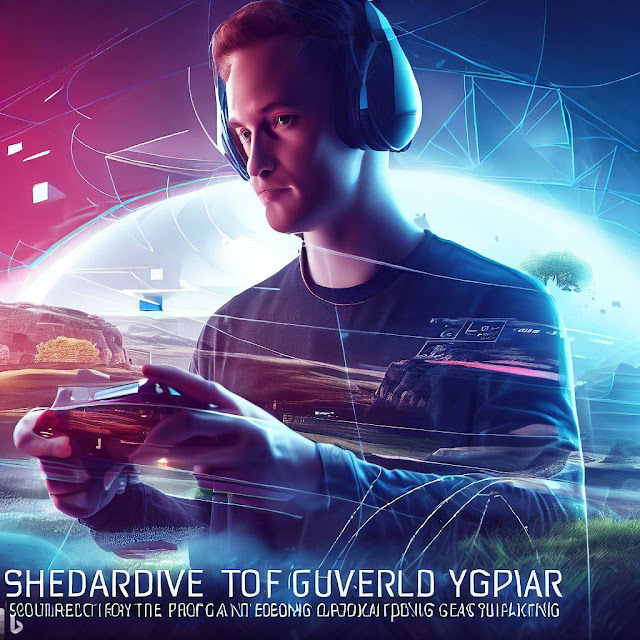Search This Blog
Talk related Game design, Development, Importance of every element in game.
Featured
- Get link
- X
- Other Apps
Navigating Game Development Challenges: A Comparative Analysis of UI/UX for Different Platforms
Navigating Game Development Challenges: A Comparative Analysis of UI/UX for Different Platforms
Introduction:
Game development is a complex journey, filled with
challenges that developers must overcome to create immersive and enjoyable
gaming experiences. One significant hurdle arises when developing games for
different platforms, each with its unique characteristics and limitations. In
this blog, we'll explore the problems faced during game development for various
platforms and how these challenges impact User Interface (UI) and User
Experience (UX) design.
Platform Diversity: The Two Worlds of Development:
Developing games for distinct platforms, such as consoles
and mobile devices, requires tailored approaches to accommodate the hardware,
controls, and player expectations.
Hardware Constraints and Optimization:
Problem: Each platform has varying hardware capabilities,
and developers must optimize their games to ensure smooth performance.
Solution: Adaptive graphics settings, such as in "The
Witcher 3: Wild Hunt," allow players to adjust visual fidelity based on
their hardware, maintaining a seamless experience across platforms.
Control Variability:
Problem: Different platforms offer varied control schemes,
from touchscreen controls on mobile devices to gamepad inputs on consoles.
Solution: "Fortnite" successfully adapted its
controls to mobile devices by implementing intuitive touch controls and
customizable HUD elements, enhancing the UI/UX for mobile players.
UI/UX Design for Screen Size:
Problem: Mobile devices have limited screen real estate
compared to larger screens on consoles, affecting UI layout and readability.
Solution: "Monument Valley" is praised for its
impeccable UI/UX design, which incorporates visually pleasing elements and
navigation cues that accommodate smaller screens without compromising the
experience.
Adapting Gameplay Mechanics:
Problem: Gameplay mechanics may need adjustments for
different platforms to ensure a satisfying experience.
Solution: "Minecraft" successfully adapted its
crafting and building mechanics to touch controls, providing an intuitive
experience on mobile devices.
Cross-Platform Play Challenges:
Problem: Enabling cross-platform play introduces UI/UX
challenges due to varying interfaces and performance considerations.
Solution: Games like "Rocket League" implement
standardized UI elements and cross-platform parties to enhance the
cross-platform experience while maintaining consistent UI/UX.
UI Consistency and Brand Identity:
Problem: Ensuring a consistent UI/UX across platforms while
maintaining brand identity can be challenging.
Solution: "Hearthstone" maintains a cohesive UI/UX
across mobile and PC platforms, facilitating a seamless transition for players
regardless of the device they use.
Journal Article: Chittaro, L., & Ranon, R. (2017).
Interaction design and gamification in health: Fitness and persuasion as
motivating factors to use exergames. Entertainment Computing, 20, 63-73.
Research Paper: Drachen, A., Sifa, R., Bauckhage, C., &
Thurau, C. (2012). Guns, swords, and data: Clustering of player behavior in
computer games in the wild. In Proceedings of the international conference on
entertainment computing (pp. 286-294).
Conclusion:
Developing games for diverse platforms presents unique
challenges that demand innovative solutions. UI/UX design plays a crucial role
in overcoming these challenges, ensuring that players across different
platforms can engage with games seamlessly. As game developers continue to
navigate these complexities, they redefine the boundaries of UI/UX design,
ultimately enhancing the gaming experience for players around the world.
References:
Hamilton, W. (2019). User interface design for video games:
The interplay of text, images, and gameplay. Routledge.
"The Witcher 3: Wild Hunt" (CD Projekt Red, 2015).
"Fortnite" (Epic Games, 2017).
"Monument Valley" (Ustwo Games, 2014).
"Minecraft" (Mojang Studios, 2011).
"Rocket League" (Psyonix, 2015).
- Get link
- X
- Other Apps
Popular Posts
The Crucial Role Played by UI/UX Designers in the Gaming Industry
- Get link
- X
- Other Apps
Mass Effect: Andromeda - Unraveling the Missteps and UI/UX Misadventures
- Get link
- X
- Other Apps
Shaping Tomorrow's Gaming Landscape: The Future of Game Development, Design, and the Evolving Role of UI/UX
- Get link
- X
- Other Apps




Comments
Post a Comment